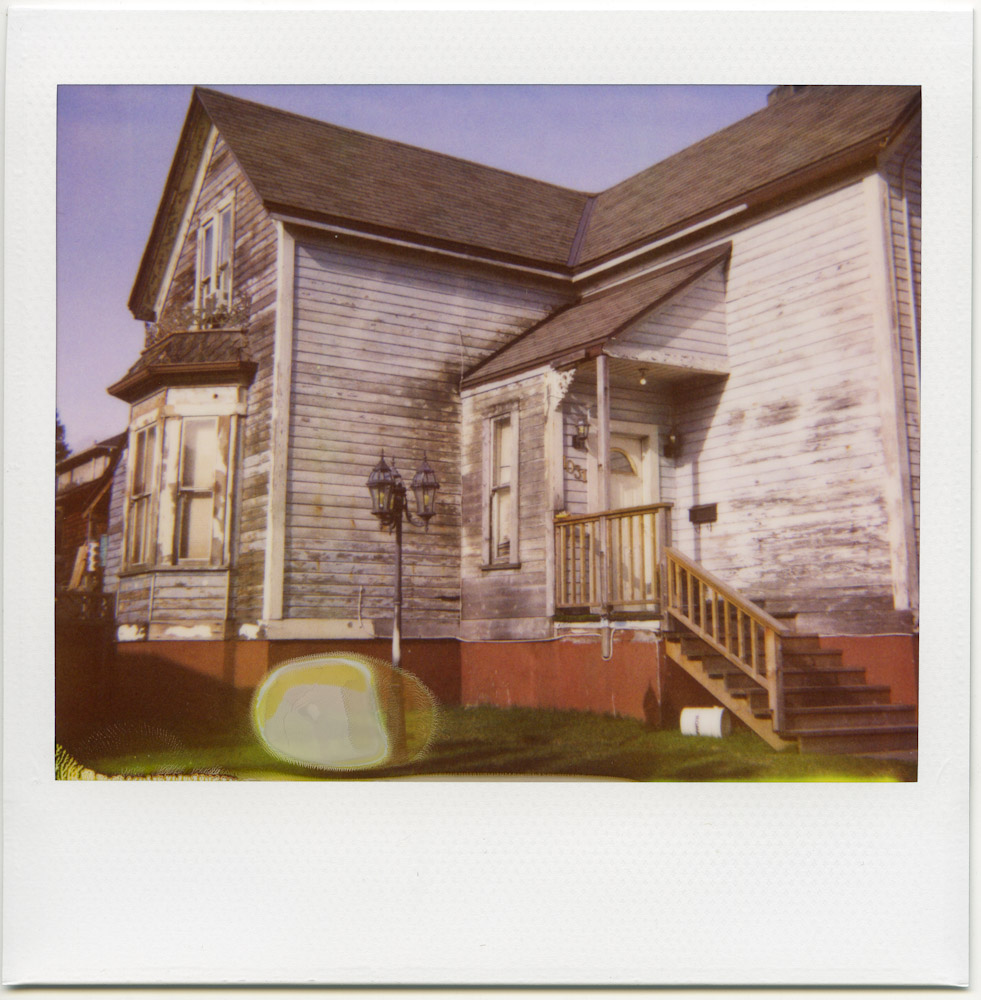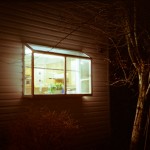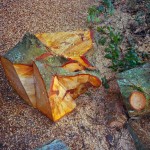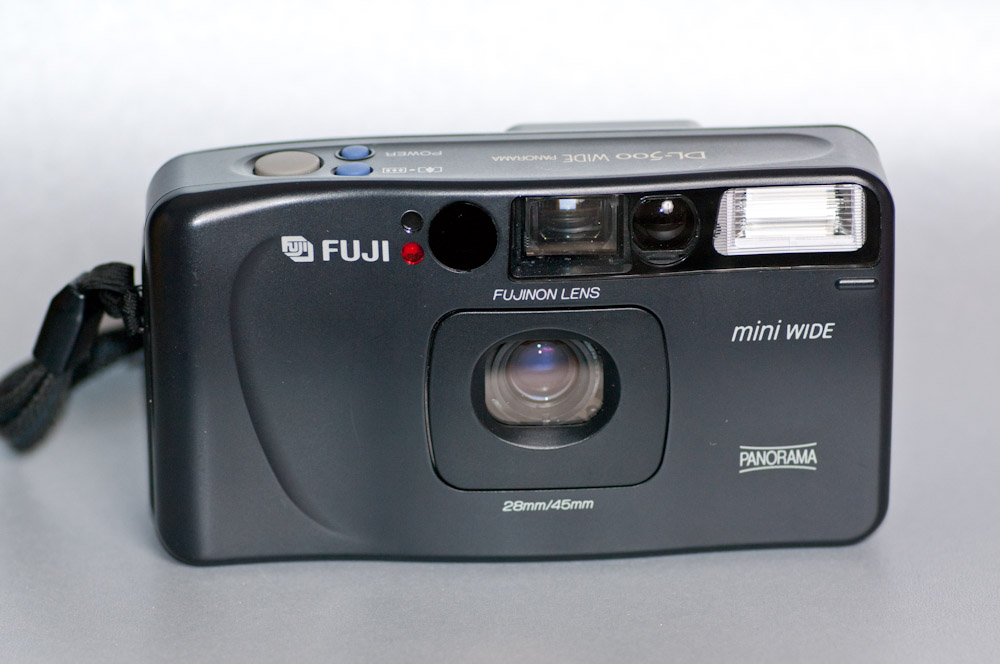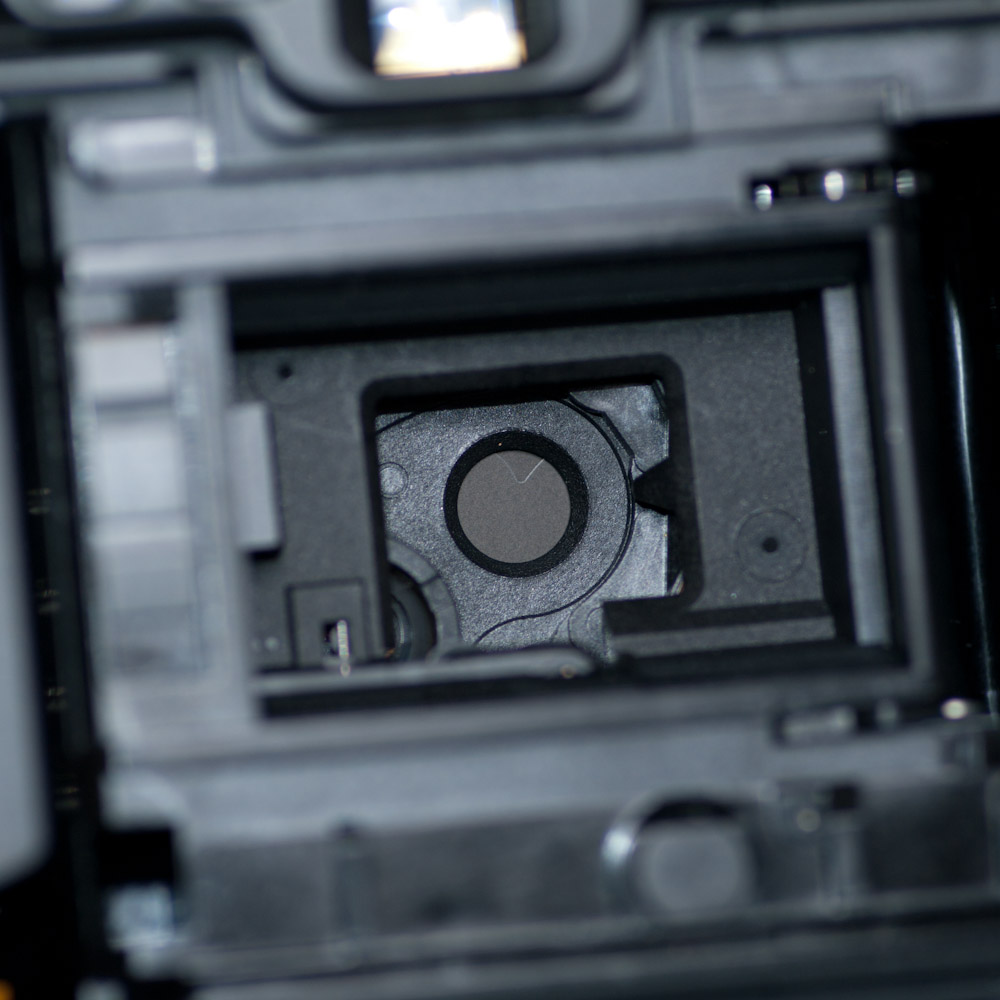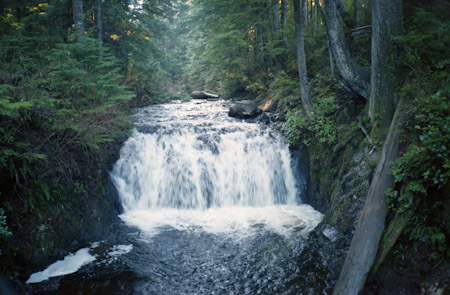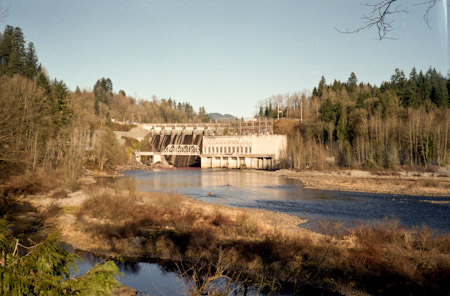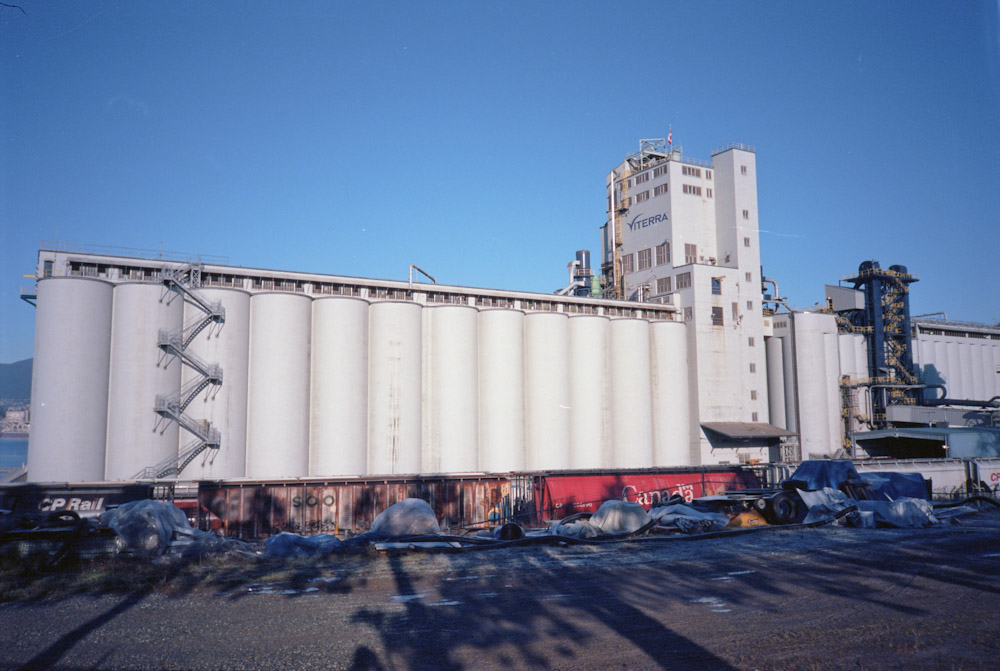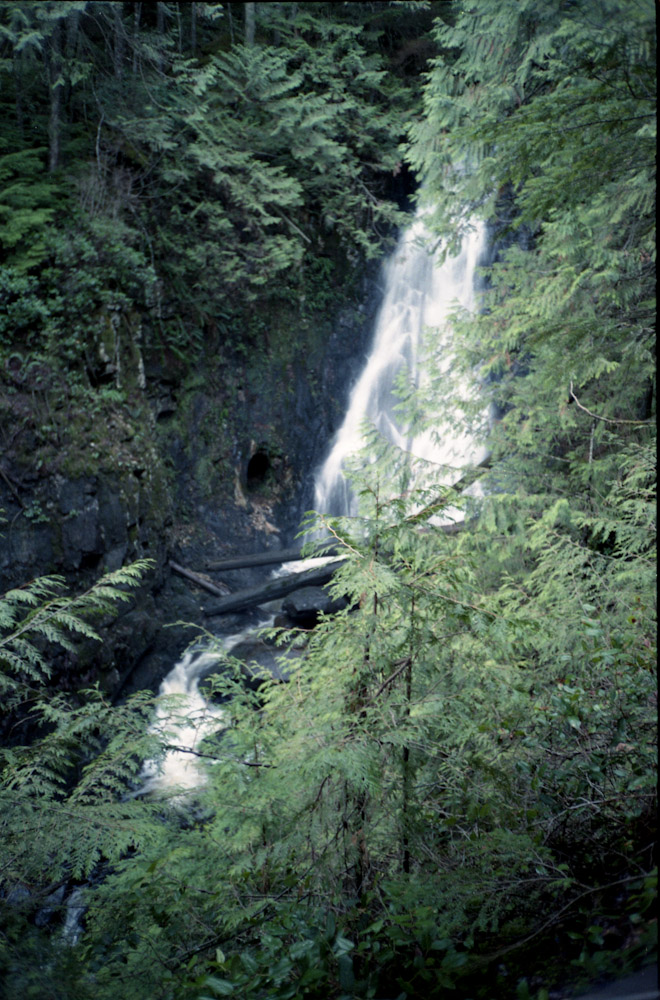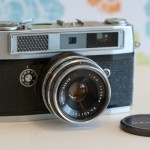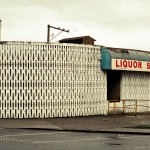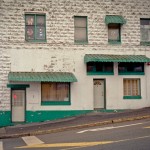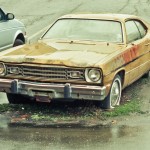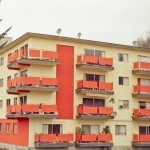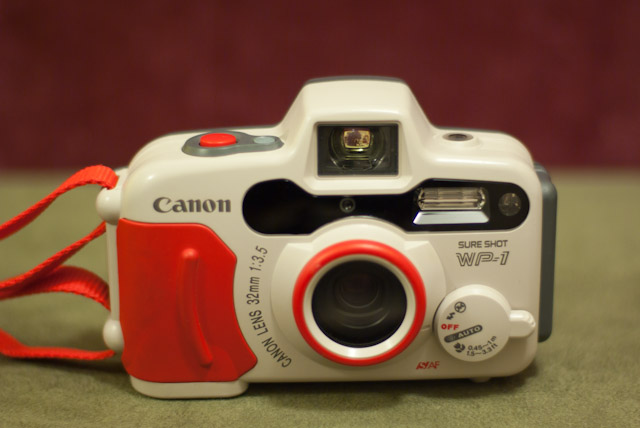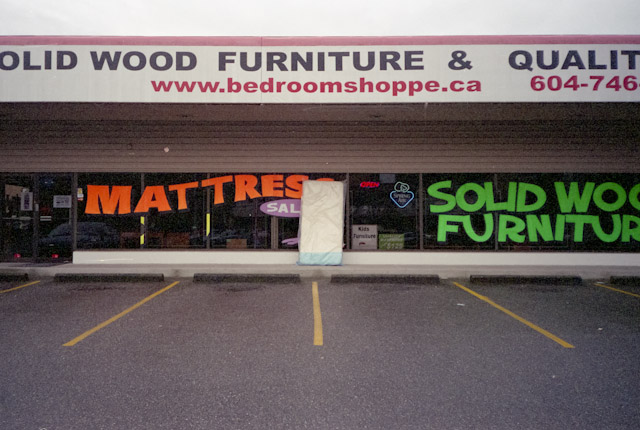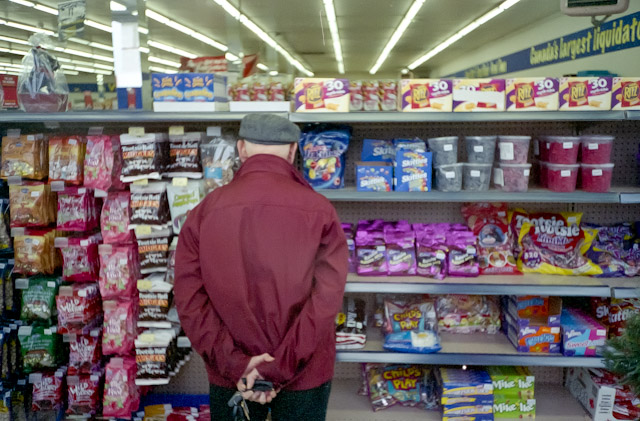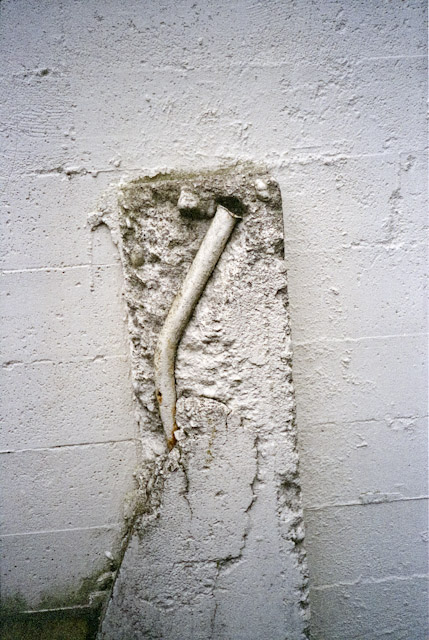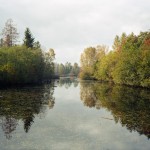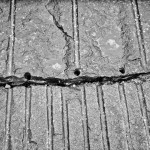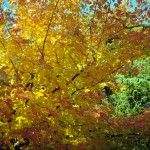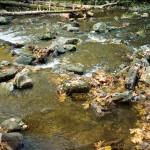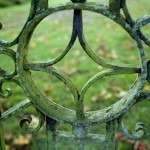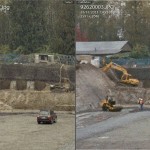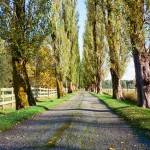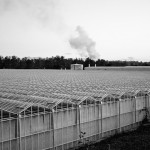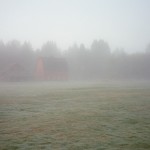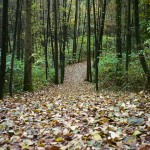Leica Mini Shots
As I’ve posted before I like the Leica Mini finding it does a great job as a point and shoot. I unfortunately used some pretty poor film in it this last time and didn’t really end up with too many keepers. These four shots are my favorites and stand out from the rest mostly because they turned out. Note to self outdated Kodak 400 is to be avoided.
Fuji DL-500 Wide
There’s so much silk screening on this camera I can hardly determine what to call it. “Fuji DL-500 WIDE Panorama” “Fuji mini wide” It is however the DL-500. The most unique feature of this camera is that it has two focal lengths 28mm and 45mm, not something in between. This arrangement is made by swinging an additional lens element internally into the light path and repositioning the lens at the same time. A button on the top of the camera toggles between the two focal lengths. Additionally the viewfinder magnification changes to give an equivalent view for the selected focal length.
With the camera set to 28mm the secondary lens element can be seen hidden away in the bottom left corner just beneath the shutter.
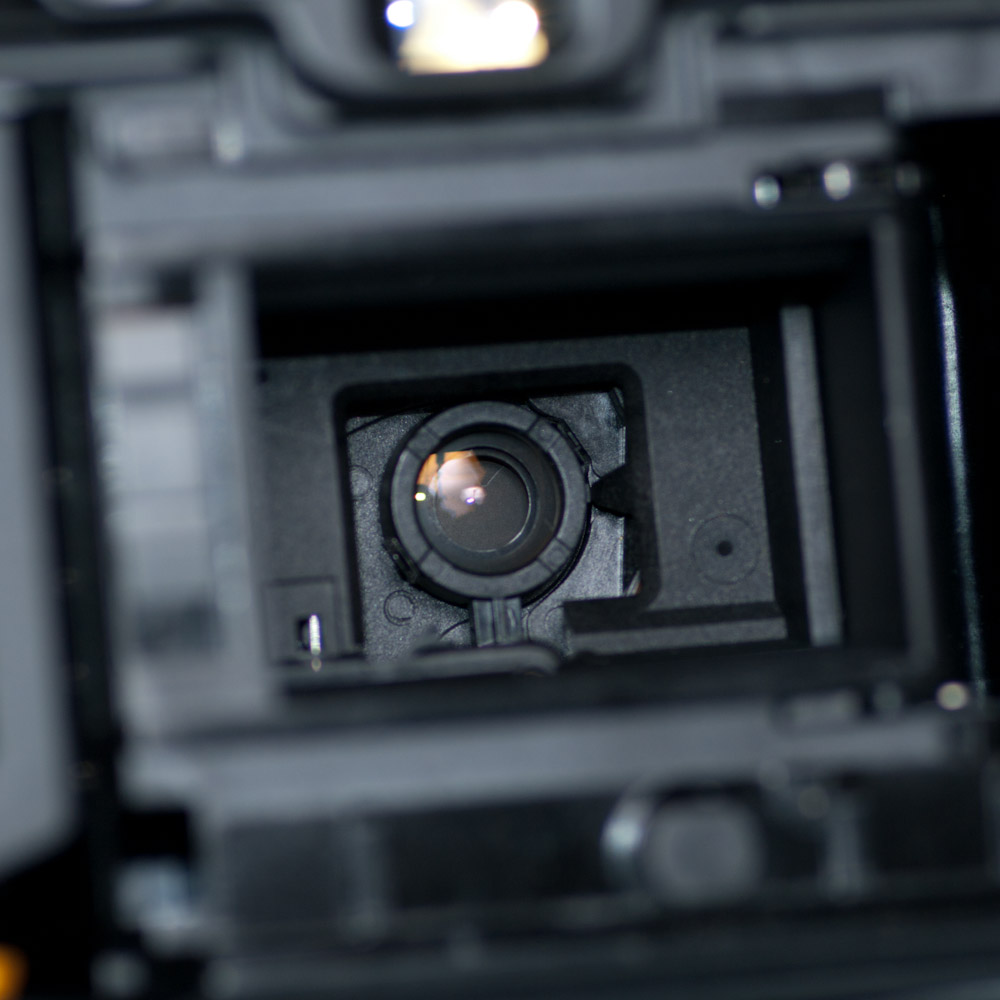 Here you can see the camera now set to 45mm with the additional lens element swung into place.
Here you can see the camera now set to 45mm with the additional lens element swung into place.
Samples of the two focal lengths.
I was initially pretty excited by the prospect of this camera because of the wide 28mm focal length, there are very few 35mm film point and shoots that have lenses this wide. But the image quality of the lens in either focal length is not particularly good. The images are quite soft and there is a great amount of vignetting especially with the 28mm setting. That said though it is compact, light weight and 28mm.
Two more quick notes about this camera. It requires two batteries to operate. A CR123A 3V lithium battery but also a CR2025 that is located inside the back of the camera. Both are required unlike some cameras that use the smaller battery just for date imprint functions. Also in order to set the mask for panorama images you need to open the back and make that change inside the camera, for obvious reasons you can only do this before you start shooting. I may give this camera another try in the future but if I do I will try closer distances and see if that makes a difference in the images, street photography perhaps.
Pentax K-01 and Pentax MV “point and shoot?”
This morning Pentax has released a new camera the K-01 which is the first “mirrorless” camera that takes full size DSLR lenses without an adapter. One thing about this camera that is sure to draw controversy is the fact that it has no viewfinder. It relys solely on its 3″ rear LCD for image composition, this is a foreign concept for many people. Essentially the camera will be held with two hands out in front of your face, very much like a point and shoot. Having used both types of cameras for at least the last 8 years I can say that the usage is so different that many current DSLR users will not be willing to use this camera because of it’s lack of a viewfinder. That said when you are comfortable with that method of shooting it seems quite natural.
On the what’s different side Pentax has added the ability to shoot in multiple aspect ratios at the time of capture rather than needing to compose with a future crop in mind. The available ratios are (4:3, 3:2, 16:9 and 1:1) . I like this idea very much as I do like to compose mainly on the spot.
Here is the link to Pentax Canada’s information for the K-01 http://pentaxcanada.ca/en/digital_slr/K-01/
Did I mention it comes in yellow! 
and now for the rest of the original post……
While the Pentax MV is an SLR with a mirror and the ability to change lenses it really performs like a manual focus point and shoot. What I mean by this is that there is little user control. Yes you set the aperture and it selects the shutter speed but beyond that you must rely on the camera to get the exposure correct. For most of this roll of film I mounted the Pentax SMC A 40mm pancake lens which together with the body makes a very compact camera all things considered.
I used outdated film and got what I deserved but converting it to B&W gave me some results that I’m happy with.
1000
So I’ve managed to post 1000 cell phone pictures to Mytubo in the last 4 months. It’s been an interesting exercise made all the more fun through some friendly ribbing back in forth with Duncan Turner of DLT photographic. I’m slightly disillusioned at the same time I’ve been enlightened. In general people like pretty pictures and don’t like to be challenged. You need to visually slap people upside the head with a kitten to get attention. I’m not just lamenting the fact that some of my better images go unnoticed while formulaic pleasant ones get lots of likes and often become hot pics it’s the same for everyone. I have a better understanding of how my images are viewed and understood or misunderstood.
I think as a painter I create a lot of images that are really about the masses of colour and division of the image plane but most people there expect photographs to be about something making these images appeal to a much smaller audience. I do now have a large library of cell phone pictures all composed for the square which will fit together nicely in a mosaic. I’m not done either I may even pick up the pace.
Mamiya Ruby Rangefinder
Not to be confused with shooting a Red Rider BB gun. When you use a lot of older rangefinder cameras they do seem to meld into one after awhile. After all the form did not change in any great amount for decades and they were manufactured by many more camera companies than exist today. So it’s difficult to really see something that makes one stand out from the pack, you may be thinking OK what makes this one stand out Wallace, and the answer is nothing particularly. Produced in 1959 It has a 48mm f 2.8 lens certainly not the fastest, and a selenium cell metering system that is not coupled. The aperture, shutter and focus are all nicely built with smooth precise movements. Even the film advance has a wonderful ratcheting sound that reinforced the quality of the camera. So while it doesn’t stand out from the pack it certainly is nicely built and operates accordingly 

These sample shots were done on a wet overcast day using Kodak Ektar 100 I’ve played around with the colour extensively which is possible with the amount of raw information recorded with that film. It really produces scans that can be manipulated much like a digital capture. Update I almost forgot to mention this roll of film was saved after the film leader was sucked back inside by my Fuji DL500 which is another story altogether. Thanks Duncan from Lens and Shutter for pulling the end back out without anyone having to resort to inserting wet film to grab it.
The Canon WP-1 and Fred Herzog
While watching a documentary on Fred Herzog Snapshot: The art of Photography II, a Vancouver photographer best known for his Kodachrome slides of the city during the 1950’s and ’60s, I was struck by his use of the Canon WP-1 while being interviewed on the street. It got me to wonder why he would be using a 15 year old point and shoot camera. Never having met him I clearly have not asked why but here are my reasons that he might choose this camera despite all the other options available. These are not in any particular order but as they come to mind.
1. It is weather proof (this can be an important thing in Vancouver at some times of year)
2. It has an large viewfinder with a 33mm eye-point in fact you can compose pictures with out even bring it right to your eye.
3. It has a simple control dial on the front that does all the functions in a simple arrangement (Flash Off,Flash On, OFF, Auto, Macro) the only buttons are shutter and timer
4. It is quiet, the shutter and film advance are on the quiet side for a point and shoot film camera likely going unnoticed on the street.
5. The Lens is 32mm which is wide but not too wide
6. Here I may be stretching things but because of its construction the lens is completely internal allowing you to put the camera right up against glass.
That seems like plenty of reasons to me. So with some new found interest in retrying this camera I loaded it with some film (I will refer back to this in a moment) and went out and shot a roll of 24. And the result is that despite it’s toy like and slightly ugly appearance it functions well as a wide angle street camera with little fuss. Now as to the film, unfortunately I shot what was film in name only. I need to find any other rolls of this stuff and do an analogue delete on it. I think I’m cured, for now, from my pentient for shooting with anything I find or am given.
Konica Big Mini Vs Super Big Mini
Something happened along the way to this blog post. I had originally intended to show the difference in output from these two cameras using their respective film formats (35mm for the Big Mini and APS for the Super Big Mini) but the thing is that it really is indisputable that 35mm film is better so I decided to just throw all of the shots together and forget about it. Several things are apparent however. The wide aspect of the APS film can be used to make an interesting difference in some compositions, it amounts to 16:9 when you use the entire frame and the other thing is that the Super Big Mini has quite a bit of vignetting with the larger 35mm film.
Big Mini and Super Big Mini (which is actually a double oxymoron)
The revenge of APS
Back in olden times, when surfing the Internet was preceded by the squelch of a phone modem and required you to know the URL of the sight you wanted to go to, film manufacturers decided to make things more convenient. Not for the Internet, they didn’t see that coming, but for handling film. What they came up with was APS film and what it addressed was the loading and storage of the film. The film stayed inside the cartridge completely until loaded by the camera and was stored inside the cartridge again after being developed. People using APS film never actually saw the film itself. In creating the cartridge though they did one other significant thing and that was reduce the film size as compared to 35mm film which was and is the film size that most people are familiar with. The side effect of this reduced size is also a lowering of picture quality, especially evident when the images are enlarged beyond a certain size. Because most of these pictures where never printed larger than 5″x7″ this largely goes unnoticed.
Fast forward several years and we are now searching the Internet more effectively but not yet Googling. At this point digital photography’s is skyrocketing and film use is plummeting. APS film being the weaker of the film formats with a much smaller user base was the first to be left behind. A lot is happening within digital photography at this time, point and shoot cameras actually suck and produce inferior images and cost large sums of money. Digital SLR’s are only just becoming available and also cost large sums of money. Most DSLR’s then as now came out with either a sensor the same size as 35mm film often referred to as “full frame” or the smaller APS-c or “cropped sensor”. Why would manufacturers even bother with producing sensors the same size as the failed APS film you might ask. The reasons are mostly down to the cost of manufacturing the sensors and as it turns out the full frame ones are a lot more costly relative to there size. So in order to create a market for DSLR’s camera makers needed to bring the costs down to a point that enough people could afford them, how else could they sell lenses. I remember it was a big deal when the first sub $1000 DSLR was released in around 2006.
From day one it was clear that full frame sensors were better than APS-c ones as it had been between the two film sizes. Manufactures helped to make this clear also by putting full frame sensors in their big rugged professional cameras and APS-c sensors in their consumer offerings. And that is how it’s been for about ten years, but the thing is that sensors have been steadily improving with each new iteration and the gap in image quality between full frame and APS-c has narrowed. This may be as much a result of companies putting resources to where they feel they will get the best return. After all they are not out to produce the best camera with no concern for cost they are competing hard to stay ahead of each other in the market place. There are many more things going on in digital photography including other sensor sizes and camera forms but within the DSLR world it’s mostly about full frame and crop sensors.
So if full frame sensors result in better image quality in general then what if any advantage other than cost do crop sensors provide? Well because of there smaller size they record a narrower field of view from the same focal length lens. This is often referred to as the crop factor. This “crop factor” is roughly 1.5 times for most APS-c sensors. The result is that for example a 100mm lens on APS-c provides the same field of view as a 150mm lens on full frame. This relationship is true for any focal length so that a 300mm lens becomes equivalent to a 450mm lens on full frame. In this case it’s clearly an advantage for people wanting a long telephoto lens. The opposite is true for wide angle where what was a wide 18mm becomes equivalent to a 28mm lens on a full frame camera.
So why did I title this post revenge of APS? Well it’s been a long road but we are at a point where some of the most recent APS-c sensors can perform at the same level as full frame sensors. This may not be a universally held belief but it’s pretty easy to argue that the difference isn’t nearly what it once was. It’s true that “full frame” cameras provide a shallower depth of field, but may not be the be all end all of photography. I find myself again on the side of the argument that ends with the question. If the viewer of an image has no idea how it was made does it matter how it was made?
In a future post I will time travel back to 1996 and compare two otherwise similar cameras having the key difference that one took 35mm film and the other APS.
It’s OK to Use Program Mode with a DSLR
I’ve always assumed that other people used the Program mode on their cameras as I have but recently I’ve come to realize that there is some derision associated with using Program mode. An amusing anecdote relayed to me was how someone misunderstood the P to be for Professional and they couldn’t figure out why they didn’t get better results with it.
Some people may tell you that you need to shoot in aperture priority or shutter priority or even manual mode if you are a serious photographer but I disagree. If you are using a modern DSLR from almost any manufacturer you are using the most sophisticated metering systems that have ever existed. I’m not advocating slavishly setting the camera to Program or some Auto mode and letting it do all the thinking but there is no reason not to take advantage of Program mode.
My first SLR I bought for myself was the Minolta X700 which was also my first introduction to Program mode. At the time it seemed wrong to turn over so much to the camera and I tended to use the camera in Aperture priority instead and only used the exposure compensation when I felt a scene needed it. Now though I use Pentax DSLR’s and use them almost exclusively in Program mode. I have the camera set to use what is called the MTF program line, what this means is that the camera attempts to select the apertures that give the best resolution results for the lens that is mounted on the camera. I consider this the starting point, pointing the lens at a subject and metering, the camera will give you feedback about what aperture and shutter would give an average exposure. Changing either shutter or aperture at this point results in a corresponding change in the other in order to keep the exposure the same. If you think that there needs to be an adjustment to the exposure then a change to the exposure compensation will move the camera settings to create an exposure that differs from the program line by the amount you select. After taking a picture or when evaluating a scene for exposure you can then review the image and look at it’s histogram to see if your happy with what is essentially the data that you just captured.
So what does this all really mean? Well I see it as working together with the camera as apposed to believing that I always know what is best. You should always be aware of what shutter speed, aperture and ISO are set at but there is no reason for general photography to not allow the camera to get things started. Of course there will always be exceptions like when controlling depth of field or the shutter speed is of primary importance but even these can be done within Program mode. With practice in what ever mode you choose will come the confidence to make changes and the freedom to create art without dwelling on the technical. This should be the ultimate goal, to attain a level of proficiency so that the act of photography doesn’t intrude into the image making. If Program mode (I’m not referring to any sort of Auto mode) allows you to create good images then that is OK, after all it’s all about the results, no one looks at a print and says “I think they had the camera on Program”.
P.S. It’s a good thing WordPress has a spell checker I need that more than I need a light meter.
